Potlatch Figure (RBCM 1855)
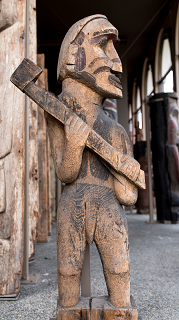
Potlatch Figure
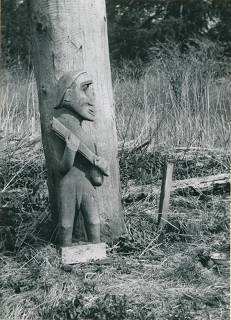
The blade in the figure’s axe appears to be missing in this photograph taken by Charles F. Newcombe at Xwatis, Quatsino Sound, in 1913. PN 654.
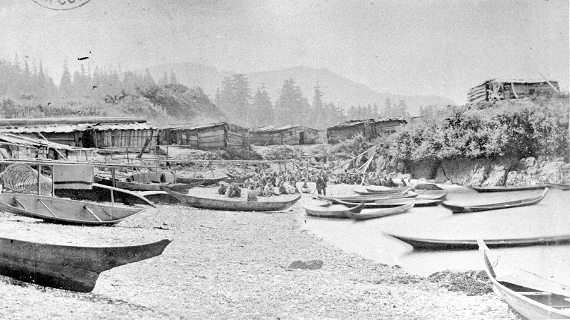
Quatsino village (Xwatis) about 1866. Frederick Dally photograph, A-00939.
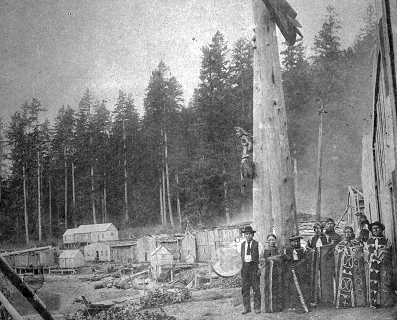
A group of people, possibly dressed for a potlatch, at Xwatis in 1895. Ben Williams Leeson photograph, D-07694.
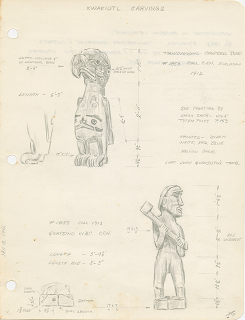
John Smyly’s drawing of the potlatch figure at the Royal BC Museum, 1966.
This carved cedar figure belonged to the Tsetseya family from the Gusgimukw village of Xwatis in Quatsino Sound, and proclaimed one of their ceremonial privileges. The figure holds an axe, ready to chop a Copper (a metal plaque that is a symbol of wealth) or a canoe. When shown at potlatches inside the big house, close to the fire, it signalled that the chief was going to destroy property of great value to demonstrate his wealth and social position. Later, the breaking of the Copper or the canoe would be done with actual tools.
According to Charles F. Newcombe, who purchased it for five dollars in 1913 from someone whose name he recorded simply as C.N., the figure’s name is Sayupala, or Ready to Chop. Now missing its original red and black paint, the figure is on display behind glass at the Royal BC Museum’s east doors.
Do you have a story to share about this item? Add your voice to the community.